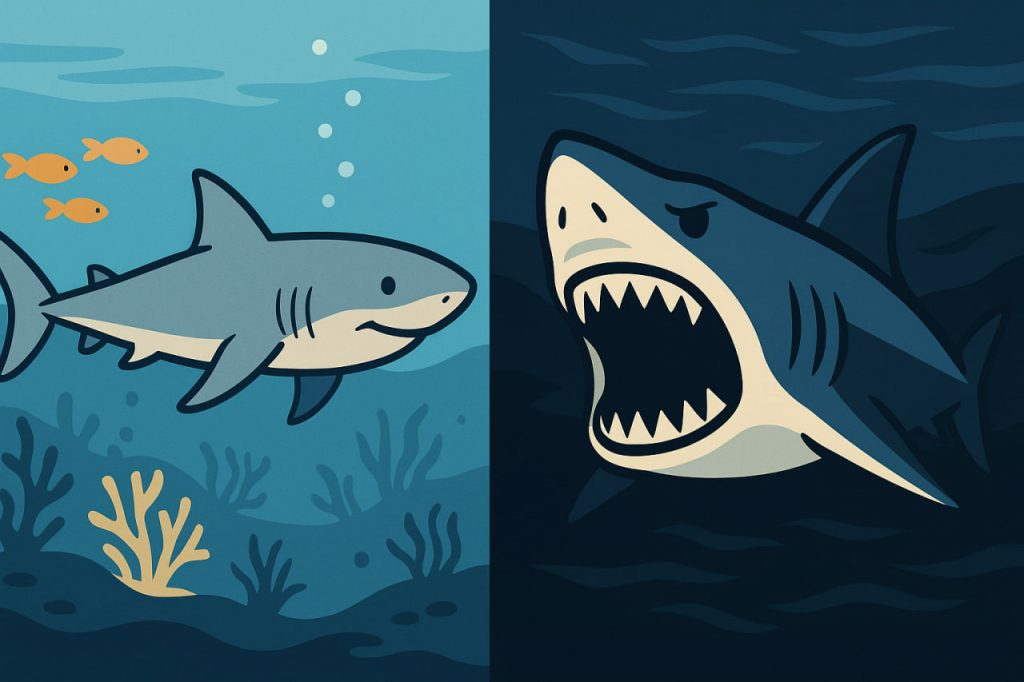Sharks are among the most fascinating and misunderstood creatures in the ocean. While they have existed for more than 400 million years, myths and fear often overshadow the reality of their biology and behavior. These predators play a critical role in maintaining the balance of marine ecosystems. By examining both facts and common misconceptions, we can better appreciate sharks as essential parts of Earth’s biodiversity.
Facts About Sharks
Sharks are a diverse group of cartilaginous fish, with over 500 known species ranging from the tiny dwarf lanternshark to the massive whale shark. They are apex predators, which means they help regulate fish populations and keep ecosystems healthy. Sharks possess highly developed senses, including electroreception, which allows them to detect the weak electric fields of prey. Contrary to popular belief, most shark species are harmless to humans, with only a few responsible for rare attacks. Their reproduction is slow, with long gestation periods, making them vulnerable to overfishing.
Myths About Sharks
One of the most common myths is that sharks are “man-eaters” constantly hunting humans. In reality, shark attacks are extremely rare, and most are cases of mistaken identity when sharks confuse swimmers or surfers for prey like seals. Another misconception is that sharks must constantly eat large amounts of food, but many species can go weeks without a meal. Some myths even suggest sharks are immune to disease, but research shows they are susceptible to infections and tumors. Popular culture, especially movies, has exaggerated their danger, leading to unnecessary fear.
Importance of Sharks in Ecosystems
Sharks help maintain healthy oceans by controlling populations of prey species and preventing overgrazing of marine vegetation. Their decline disrupts food chains and can cause imbalances, leading to ecosystem collapse. Conserving sharks is critical not only for biodiversity but also for fisheries and coastal communities that rely on healthy oceans.
Conclusion
Sharks are ancient, complex animals that deserve respect and protection rather than fear. By separating facts from myths, humans can learn to coexist with sharks and recognize their vital role in sustaining marine life. Protecting these creatures ensures healthier oceans and a more balanced planet.
Interesting Facts
Sharks are among the oldest predators on Earth, having existed for over 400 million years, long before dinosaurs. There are more than 500 known species, ranging from the tiny dwarf lanternshark (just 20 cm long) to the massive whale shark, which can exceed 12 meters. Contrary to popular myths, most sharks are not dangerous to humans — out of hundreds of species, only a handful are involved in rare attacks each year. Sharks play a crucial ecological role by maintaining the balance of marine ecosystems, preying on sick or weak animals. Interestingly, sharks have an extraordinary ability called electroreception, allowing them to detect the faint electrical signals of other organisms. Their teeth constantly regenerate, with some species replacing tens of thousands of teeth in a lifetime. Despite their fearsome reputation, sharks face serious threats from overfishing and fin trade, leading to population declines that endanger ocean health more than the creatures themselves ever could.
Glossary
- Cartilaginous fish – Fish whose skeleton is made of cartilage instead of bone.
- Apex predator – A predator at the top of the food chain with no natural enemies.
- Electroreception – The ability to detect electrical signals produced by other animals.
- Biodiversity – The variety of life in a particular habitat or ecosystem.
- Overfishing – The practice of catching too many fish, leading to population decline.


